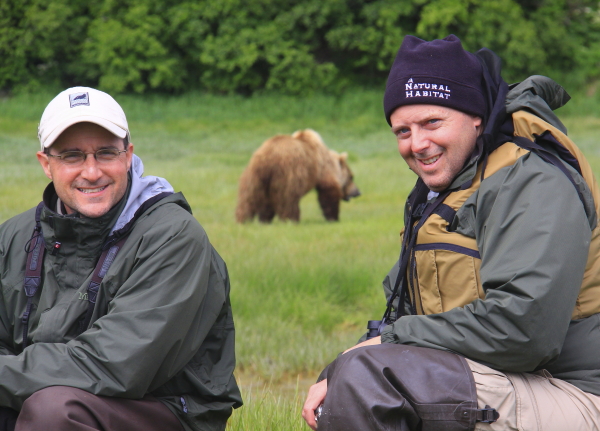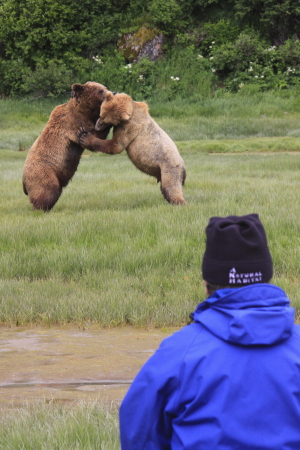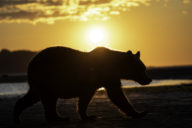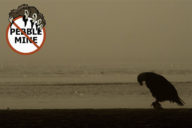The summer season is nearing once again, and bears have already started emerging from their dens after a long sleep. For some people, bears are a nuisance, many fear them and others view them as an opportunity for a trophy. Yet there are a few folks, myself included, who treasure and appreciate their presence and hope our society finds a way to conserve their dwindling populations. In the last 15 years, I have seen a remarkable thing happen which has been vital to the future of bear conservation- the growth of the bear viewing industry. Prior to the 1990’s, the revenue brought in from hunting was the only real economic value of Alaskan bears. Today, there are hundreds of businesses and individuals who rely on populations of viewable bears for their success, and in today’s world, this aspect of monetary value means everything.
The New York Times recently published an article about the value of 100 living sharks which reside in a shark sanctuary off the island nation of Palau. These sharks attract divers from all over the world who support the economy of the island. A study showed that if the 100 sharks were cut up and sold for their parts, they would be worth a total of $10,800, but the lifetime value of each shark as an attraction to shark watchers was estimated at $1.9 million! Those kinds of numbers will force serious protection from and repercussions due to poaching. Money talks.
The bears of Alaska which attract bear viewers live, for the most part, in protected areas such as Katmai, Denali and Lake Clark National Parks, and the McNeil River State Game Sanctuary. Populations of hunted bears, such as those on Kodiak Island, fear people and are generally difficult and even dangerous to view. But what happens to a bear in a protected area who crosses an invisible boundary into a hunted area? That valuable bear may be killed.
An outdated study showed approximately 11,523 people participated in bear viewing in Southcentral Alaska in 2004, and the economic value of this was estimated at $32,587,044 for that year. These hard numbers kept the Alaska Department of Fish and Game’s proposed trophy bear hunt in 2005 on a small slice of state-owned land adjacent to Katmai and McNeil River from becoming a reality. This was a victory, but it begged the question: what kind of agency could possibly bring such a proposal to the table in the first place? It is an agency that refuses to realize the value of watchable wildlife.
It would seem obvious that Alaska would do everything in its power to protect and expand the invaluable renewable resource that is the bear viewing industry, but old ways die hard. Predator-control measures and increased harvest limits continue to pressure bear populations. In many ways, Alaska still operates under the laws of the Wild West. Many residents view the land as a frontier that needs to be tamed and manipulated to better serve their desires and needs. But there are tens of thousands of people right now preparing to visit Alaska this summer to experience a raw and untamed land, where bears still rule the mountains and forests, and these bear viewers are the key to bear conservation.







No Comments